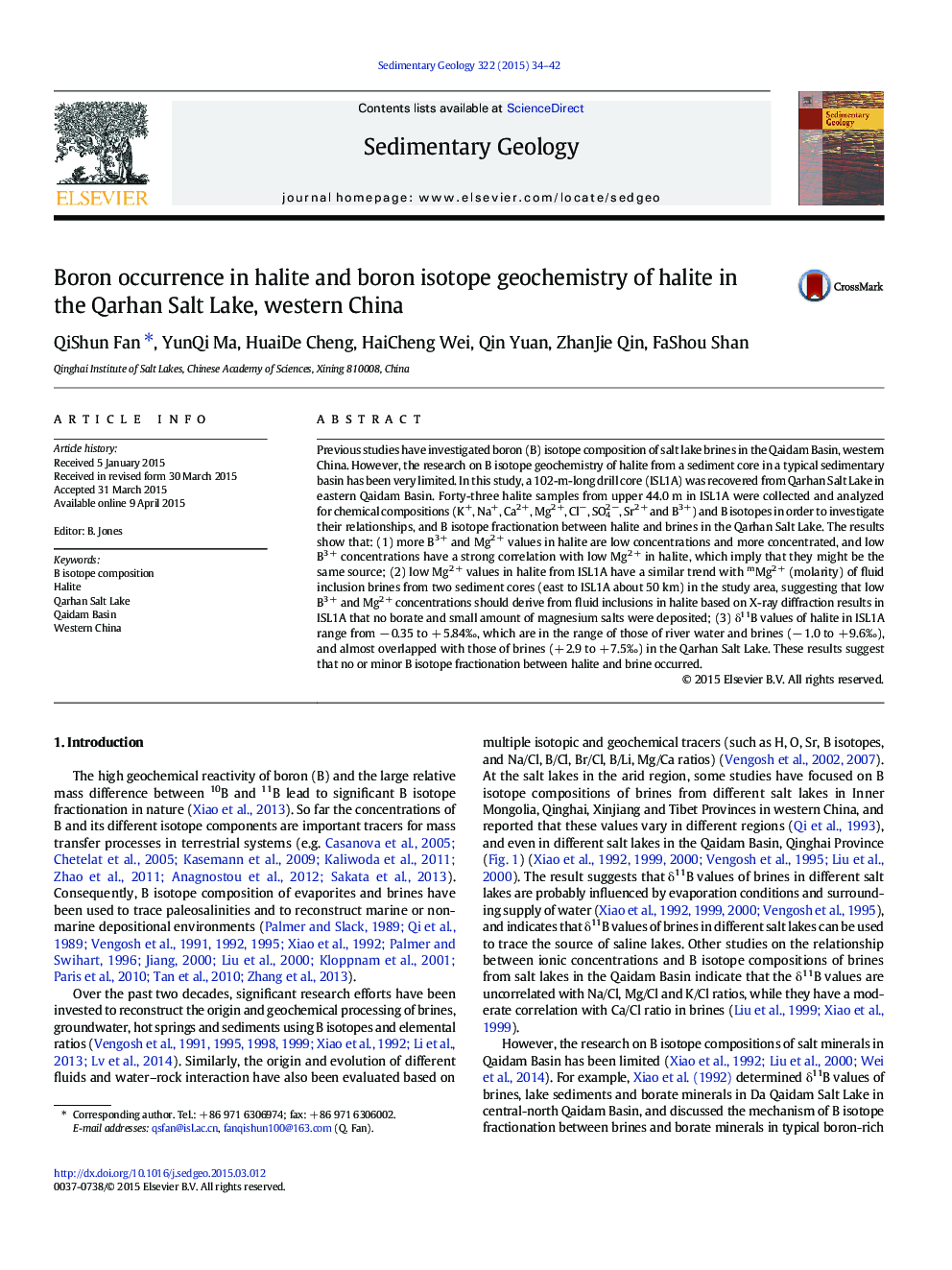| Article ID | Journal | Published Year | Pages | File Type |
|---|---|---|---|---|
| 4689260 | Sedimentary Geology | 2015 | 9 Pages |
Previous studies have investigated boron (B) isotope composition of salt lake brines in the Qaidam Basin, western China. However, the research on B isotope geochemistry of halite from a sediment core in a typical sedimentary basin has been very limited. In this study, a 102-m-long drill core (ISL1A) was recovered from Qarhan Salt Lake in eastern Qaidam Basin. Forty-three halite samples from upper 44.0 m in ISL1A were collected and analyzed for chemical compositions (K+, Na+, Ca2 +, Mg2 +, Cl−, SO42 −, Sr2 + and B3 +) and B isotopes in order to investigate their relationships, and B isotope fractionation between halite and brines in the Qarhan Salt Lake. The results show that: (1) more B3 + and Mg2 + values in halite are low concentrations and more concentrated, and low B3 + concentrations have a strong correlation with low Mg2 + in halite, which imply that they might be the same source; (2) low Mg2 + values in halite from ISL1A have a similar trend with mMg2 + (molarity) of fluid inclusion brines from two sediment cores (east to ISL1A about 50 km) in the study area, suggesting that low B3 + and Mg2 + concentrations should derive from fluid inclusions in halite based on X-ray diffraction results in ISL1A that no borate and small amount of magnesium salts were deposited; (3) δ11B values of halite in ISL1A range from − 0.35 to + 5.84‰, which are in the range of those of river water and brines (− 1.0 to + 9.6‰), and almost overlapped with those of brines (+ 2.9 to + 7.5‰) in the Qarhan Salt Lake. These results suggest that no or minor B isotope fractionation between halite and brine occurred.
